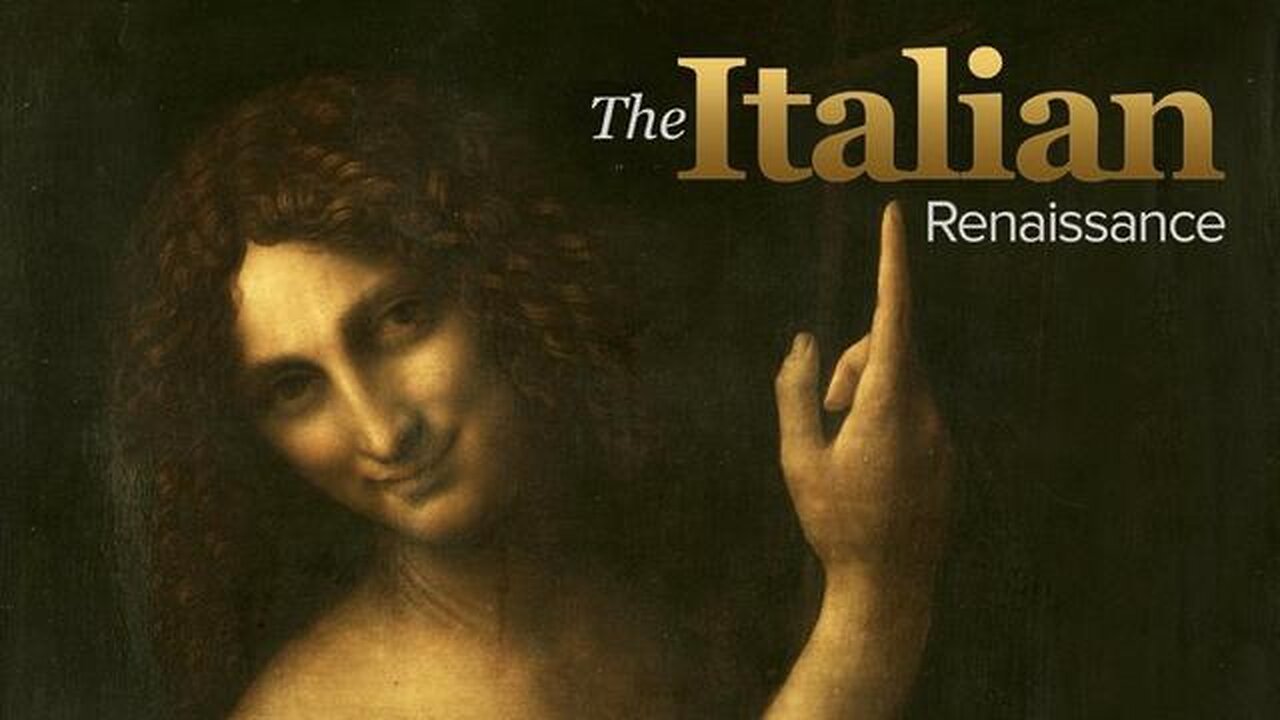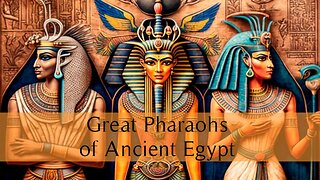Premium Only Content

The Italian Renaissance | Venice - The Most Serene Republic (Lecture 13)
Lecture 13: Venice, the other great republic in the peninsula, is a curious place. It was founded by Romans fleeing the barbarian invasions in the 5th and 6th centuries, seeking safety in the lagoons where the river Po meets the Adriatic. It was, therefore, not a Roman foundation and not originally an episcopal see. Its initial economy was fishing, which soon expanded to local and, eventually, long-distance maritime trade. The calling of the Crusades made Venice enormously rich and permitted the republic to become the most powerful maritime state in Europe and the richest city in the West. The social organization of the city resulted from its origins as well; fiercely independent, the inhabitants knew no prince or bishop but ruled themselves by choosing magistrates, who were seen only as primi inter pares, “first among equals.” At the end of the 7th century (697), the duke (doge in Venetian dialect) emerged as the elected head of state. In 1297, the system was codified in the Serrata (or closure of the Great Council) with the institution of legally defined classes. The Serrata limited membership in the Great Council, the source of political power in Venice, to families who had sat there previously and whose names were recorded in the Golden Book.
Thereafter, Venice was a republic of nobles whose economic and political interests were almost entirely associated with the success of the state. The city also avoided the factional crises of the other Italian states as the Guelf-Ghibelline struggle did not obtain. Moreover, the fear of the impoverished working class in cities, illustrated by the ciompi in Florence, was not present. The industrial workers in Venice were the skilled employees of the Arsenal, building the vast fleets for Mediterranean trade and protection, and the glass workers were equally privileged and well paid. Consequently, Venice was a stable and homogeneous society, divided informally by wealth and occupation.
Primary Source Texts:
D. Chambers, and B. Pullan, eds., Venice: A Documentary History, 1450 to 1630.
Secondary Sources:
D. S. Chambers, The Imperial Age of Venice, 1380–1580.
Robert Finlay, Politics in Renaissance Venice.
Supplementary Reading:
Frederic Lane, Andrea Barbarigo, Merchant of Venice, 1418–1449.
Lecture 14: https://rumble.com/v4xlh0q-the-italian-renaissance-renaissance-venice-lecture-14.html
-
 30:22
30:22
The Great Courses
21 days agoGreat Pharaohs of Ancient Egypt | Sneferu: The Pyramid Builder (Lecture 2)
83 -
 LIVE
LIVE
tminnzy
5 hours agoDROPS ON - BO7 BETA ALL DAY! #BlackOps7
51 watching -
 1:35:48
1:35:48
Jeff Ahern
5 hours ago $9.95 earnedThe Saturday Show with Jeff Ahern
63.7K5 -
 LIVE
LIVE
GritsGG
6 hours agoWarzone Win Grinding! Most Wins in WORLD! 3680+!
154 watching -
 55:45
55:45
Tactical Advisor
6 hours agoNew Product Alert! | Vault Room Live Stream 040
51K5 -
 3:30:37
3:30:37
Reidboyy
5 hours ago $1.76 earnedTHEY GOT RID OF SBMM WTF!?!? (Go Phillies)
26.1K -
 5:06:48
5:06:48
The Company Boyz
5 hours agoDying Light: The Beast | Ja Pierdole, Kurwa Bober!
22.3K3 -
![Mr & Mrs X - Feminism, Family, Federal Reserve, The Rise Of The [DS] Agenda](https://1a-1791.com/video/fwe2/12/s8/1/6/F/R/n/6FRnz.0kob-small-Mr-and-Mrs-X-Feminism-Famil.jpg) 58:10
58:10
X22 Report
13 hours agoMr & Mrs X - Feminism, Family, Federal Reserve, The Rise Of The [DS] Agenda
203K58 -
 16:37
16:37
Robbi On The Record
2 days ago $9.24 earnedThe Theater of Manufactured Outrage - When Left and Right Dance for the Same Puppet Master
52.5K51 -
 31:27
31:27
Stephen Gardner
1 day ago🔥BOMBSHELL: Mortician EXPOSES Charlie Kirk Autopsy - The Key Evidence EVERYONE Missed!
144K315
